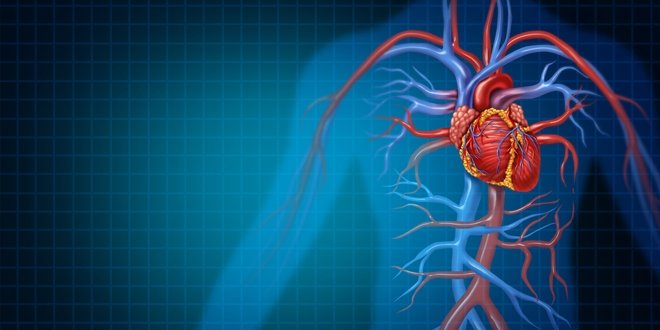
Heart disease and stroke are common complications of diabetes. In fact, people with diabetes are twice as likely to have a heart attack or stroke than those who don’t have the condition. Read on to learn more about the connection between diabetes, heart disease and stroke.
What is the connection between diabetes, heart disease and stroke?
Over time, prolonged high blood sugar levels in people with diabetes can damage blood vessels in the heart and block blood vessels leading to the brain, causing a heart attack or stroke.
Being overweight or obese, eating unhealthy foods regularly and a lack of physical activity can also lead to damaged blood vessels and contribute to a higher risk of heart attack or stroke.
What are the warning signs of heart attack and stroke?
The signs and symptoms of a heart attack include:
- Pain or pressure in your chest that lasts longer than a few minutes or goes away and comes back
- Pain or discomfort in your arms or shoulders, or your back, neck or jaw
- Shortness of breath
- Feeling sweaty or dizzy
- Stomach upset
- Feeling very tired
The signs and symptoms of a stroke include:
- Weakness or numbness in your face (drooping), arm or leg on one side of your body
- Confusion, or trouble talking or understanding what is being said to you
- Dizziness, loss of balance or trouble walking
- Trouble seeing out of one or both eyes
- Sudden, severe headache
How are heart attack and stroke diagnosed?
Both heart attacks and strokes are considered medical emergencies. If you experience any of the signs and symptoms of heart attack or stroke noted above, go to the emergency room of your nearest hospital immediately.
The hospital healthcare team will diagnose a heart attack or stroke after reviewing your symptoms, giving you a complete physical examination and administering certain tests.
Tests for a heart attack may include:
- An electrocardiogram, which measures your heart’s electrical activity. It can tell if you are having a heart attack or have had one recently.
- Blood tests, which can identify certain proteins (called troponins) that the heart releases into the bloodstream during a heart attack.
- An echocardiogram, which uses ultrasound to create a picture of your heart. The recorded waves show the shape, texture and movement of your heart valves, as well as the size of your heart chambers and how well they are working.
- A computed tomography scan, which uses many x-rays from different angles to construct images of your heart structure using a scanner and computer. This scan can detect if there is any damage to your heart structure, valves, arteries and aorta.
- Magnetic resonance imaging, which uses a magnetic field and computer-generated radio waves to create detailed images of the heart.
Tests for a stroke may include:
- A computed tomography scan, which can determine the type of stroke (a clot or a damaged artery) and its location in the brain.
- Blood tests, to check how fast the blood clots.
- A cerebral angiogram, which provides a detailed view of arteries in the brain and neck.
- An echocardiogram, which can find the source of clots that may have travelled from the heart to the brain and caused a stroke.
Is there any way to prevent heart attack and stroke?
There are a number of things people with diabetes can do to reduce their risk of heart attack or stroke. Follow the ABCDESSS* of risk reduction:
A = A1C. Most people should aim for an A1C of 7% or lower by keeping their blood sugars in the target range.
B = Blood pressure. People with diabetes should aim for a blood pressure of less than 130/80 mm Hg.
C = Cholesterol. The target for low-density lipoprotein cholesterol (the ‘bad’ cholesterol) is less than 2.0 mmol/L.
D = Drugs to protect your heart. Some medications are available that can help reduce your risk of heart attack or stroke. Talk with your diabetes healthcare team about what options might be right for you.
E = Exercise and eating. Regular physical activity and a healthy diet can help you achieve and maintain a healthy body weight, which both help reduce your risk of heart attack and stroke.
S = Screening for complications. People with diabetes should have a number of tests done at regular intervals, including tests for heart and kidney function, eye disease and foot health.
S = Smoking cessation. If you smoke, try to quit. Smoking is a major risk factor for both heart disease and stroke. Talk to your healthcare team about quitting smoking; there are many medications, smoking cessation aids and community resources available that may be right for you.
S = Self management. Set goals for yourself to reach your targets and live well with diabetes, such as managing stress effectively.
What questions should you ask your doctor?
- Am I at risk for a heart attack or stroke?
- What can I do to minimize these risks?
- What are my blood sugar, cholesterol and blood pressure targets?
- What lifestyle changes can I make to help reduce my risk of heart attack or stroke?
While people with diabetes have an increased risk of heart attack and stroke, there are many things you can do to prevent them from occurring. Talk with your healthcare team about your risk for a heart attack or stroke and how you can reduce it. For more information on diabetes and stroke, visit diabetesandstroke.ca.





